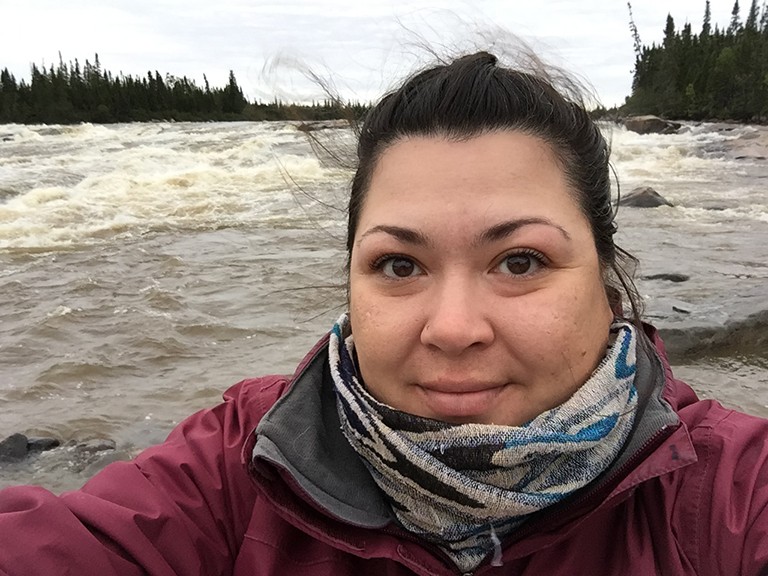Biology, genomics, social science and Indigenous Knowledge come together for the FISHES project
How can scientists best protect and nourish fisheries in Canada's northern Indigenous communities?
Two researchers from Concordia's Faculty of Arts and Science are contributing to a large-scale partnership that pairs Indigenous communities across northern Canada with biologists and social scientists to find an answer.
FISHES (Fostering Indigenous Small-scale fisheries for Health, Economy, and food Security) is a project that bridges Indigenous knowledge (IK) with science. The goal is to foster the development and co-management of sustainable northern fisheries and contribute to increased food security and enhanced social well-being and cultural continuity.
The project received $14.5 million in funding, primarily from Genome Canada and Génome Québec, with additional contributions from 20 different research partners from across northern Canada, including Indigenous agencies and organizations as well as provincial and federal government agencies. Innovation not-for-profit Mitacs also made contributions.
How it works
"This project will contribute to our ability to address critical challenges and opportunities related to food security and fisheries conservation and development for northern Indigenous communities, including impacts related to climate change," says Monica Mulrennan, professor in Concordia's Department of Geography, Planning and Environment and associate vice-president of research, development and outreach, in the Office of the Vice-President, Research and Graduate Studies.
Mulrennan, a social scientist, along with Dylan Fraser, professor in the Department of Biology, are among the dynamic group of researchers from Concordia, Université Laval and Carleton University, who are leading the project with Cree, Inuit and Dené communities.
Both Concordia researchers have longstanding relationships with the Cree communities of Eeyou Istchee.
"As a fish biologist, I'm excited to learn more about the biology of fish in a number of areas that are both familiar and unfamiliar to me, to share stories and knowledge with local fishers, and to train the next generation of biologists to adopt pluralistic approaches to fisheries monitoring," Fraser says.
Species of fish being studied include lake trout, brook trout, Arctic char, walleye, whitefish, cisco and Atlantic salmon.
 Natasha Louttit, the Eeyou Marine Region wildlife liaison officer for the Cree Trappers Association.
Natasha Louttit, the Eeyou Marine Region wildlife liaison officer for the Cree Trappers Association.
Creativity during COVID
Both Mulrennan and Fraser had to get creative due to the COVID-19 pandemic, which did not allow them to do field work.
For Fraser, that meant speeding things up. "Even though it was quite stressful, in terms of how we initially planned things, it did really force us to accelerate the co-production of knowledge and decision-making in direct collaboration with our Cree partners," he says.
Within some regions, Fraser and his team were able to set up a remote basecamp and work directly with community members that way. However, most sampling for the project has been conducted by local Cree fishers, with remote-based scientific training and guidance from Fraser and his group.
The pandemic had the exact opposite effect for Mulrennan and her graduate students: they had to slow things down.
Her part of the project involves working closely with Cree knowledge holders to ensure their IK, as well as their interests and concerns related to fish and fishing, are fully integrated in the project.
"The pandemic created the space for us to really think much more carefully and creatively about what we were trying to do," she says. "We've worked with an amazing team of Cree partners over the past 18 months to co-design a guide and provide training that supports community researchers conducting interviews and gathering stories."
Community resilience
Natasha Louttit, the Eeyou Marine Region wildlife liaison officer for the Cree Trappers' Association, has been working closely with Mulrennan and Fraser on the FISHES project.
She admits COVID-19 made things harder, as remote communities had to be extra careful due to lack of medical resources. It also meant only one person could be in a boat at a time, thereby impeding the efficient collection of fish tissue samples.
"But we can roll with it. We're resilient. Our community is really tight and very connected," Louttit says. "We really found creative ways to pull together, especially when it came to this project."
Self-determination is key
Ultimately, the goal of FISHES is to bring IK and community interests into dialogue with genomic research approaches to support Indigenous small-scale fisheries in northern Canada.
"I think we've really reached a kind of tipping point in this type of research partnership, both in terms of our understanding as researchers about how to engage and when to step back, and community partners' experience in shaping the terms of engagement. It's just a great alignment," Mulrennan notes.
Fraser concurs. "FISHES is an outstanding and timely opportunity," he says.
"I am excited that it will provide a foundation on which Indigenous communities can enhance their economic activity through fisheries, improve their food security and empower their own resource management decision‐making using the best available knowledge and most current technologies and tools."






